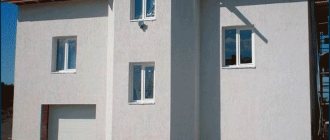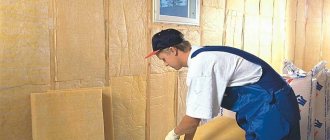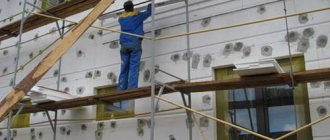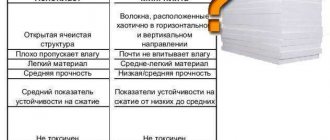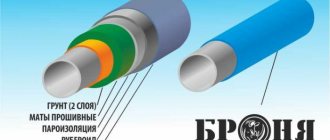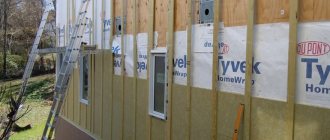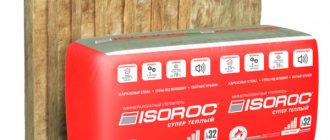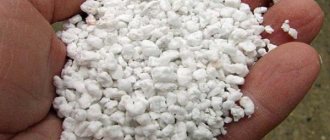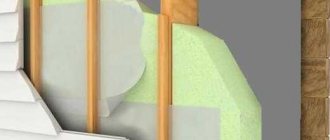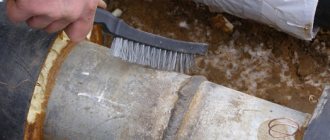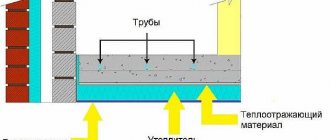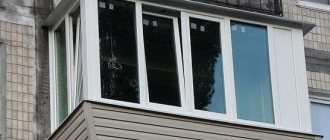The closed thermal insulation shell maintains a comfortable indoor microclimate all year round. It saves heat in winter and coolness in summer, which allows you to save on heating and air conditioning at home.
Thanks to the multi-layer construction, you don’t have to spend money on sound insulation, and if you follow all the installation recommendations, the façade will be perfectly smooth. This way you can give your home an aesthetic appearance without major finishing costs.
We tell you what external thermal insulation consists of and how to install it correctly.
Why is it better not to insulate a house from the inside?
For internal insulation, thermal insulation boards are installed between the wall and the finishing material, such as plasterboard. With this design, the outer wall is insulated from heat penetrating from inside the room, and in winter it cools down to the dew point temperature.
In external insulation, if its thickness is selected correctly, a moisture zone is formed in the insulation or on its surface and is discharged outside. Whereas with internal insulation, the load-bearing walls themselves are subject to waterlogging. As a result, they lose their thermal insulation properties.
Usually, when doing internal insulation, they try to save internal space and lay the material in a thinner layer than the calculated value. This leads to condensation on the surface of the walls and the formation of fungal mold.
Freezing of unprotected walls and numerous freezing and thawing in the off-season gradually lead to a loss of the strength properties of the structure and contribute to its further destruction. As a result, even cracks appear in brick or aerated concrete, and this is an expensive repair.
Features of working with facade insulation
The very first difficulty that you may encounter is the choice of material for insulation. Thermal insulation is selected taking into account the individual properties of the construction site. For example, at high humidity, special attention should be paid to the water absorption rate.
Mandatory steps for external insulation of the facade of a house:
- Before starting work, you need to carefully inspect the surface of the walls, clean it of debris and remnants of building materials, and repair cracks and defects. For this, a deep primer is used, which, after drying, is covered with a layer of plaster for exterior use.
- When installing insulation, a load-bearing element is required. It is installed at a height of about half a meter (base profile).
- There are always small gaps between the surfaces of the slab during installation. They need to be filled with a sealing substance.
The choice of material and method of insulation depends on the design of the building and must be selected individually.
Which insulation system retains heat better?
In a well-heated house made of brick or concrete, the thermal inertia is higher near walls with external insulation. Due to their heat capacity, they act as an energy accumulator and retain heat longer even with the window open, and a house insulated from the inside, although it warms up faster, cools down just as quickly due to the penetrating cold air.
The essence of insulation technology
This facade serves three main purposes:
- Creates a beautiful appearance of the building;
- Creates the necessary protection for external and load-bearing walls, protects the building from weather conditions, bad weather, humidity, precipitation, etc.
- Retains heat indoors, creating a pleasant climate for living, regardless of the weather outside the house.
All materials that are necessary to create a warm facade, as well as panels, are selected in accordance with the requirements of GOSTs and technical certificates, undergo sanitary and epidemiological control and must have confirmation of their safety from the fire service, which are established by law. Materials and panels used in a warm facade must have a high level of thermal conductivity, be as fire resistant as possible, have the required fire safety class and be environmentally friendly so as not to pollute the environment with harmful emissions.
How does a façade thermal insulation system with a thin plaster layer work?
This is a structure of several layers, each of which performs a specific function:
- the adhesive layer
securely fixes the insulation to the wall; - the thermal insulation layer
retains heat in the house; - the reinforcing layer
ensures reliability and durability, it increases the strength of the facade and reduces the risk of cracks; - The decorative protective layer
protects the insulation from snow, rain, wind, sunlight and mechanical damage.
How to insulate walls outside a house
The choice of external insulation depends on many characteristics, but the main thing is that it must have a low thermal conductivity coefficient for better heat retention and weakly absorb moisture. There are a huge number of materials on the construction market, but two of them are especially popular.
Stone wool.
For its production, environmentally friendly material is used - volcanic rocks. Basalt and other rocks are crushed and heated, and then thin mineral fibers are obtained from the resulting melt. Basalt wool has many advantages:
- fire resistance
– stone fibers can withstand temperatures up to 1000 ºC; - high vapor permeability
- thanks to the structure of the material, consisting of mineral fibers and air, water vapor can easily escape from the room; - sound insulation
– stone wool is a very effective sound-absorbing material; - durability
– the confirmed effective service life is 50 years. This is not a limit, but a limitation of the existing methodology; - low thermal conductivity
- a 10 cm wide basalt mat with a density of 100 kg/m3 retains heat in the same way as a 1.20 m thick brick wall; - reliability
– the effectiveness and durability of stone wool solutions has been proven in practice. It has insulated thousands of buildings in various climatic conditions around the world.
Stone wool is safe for humans, has high biological and chemical resistance, and is also easy to install and cut.
Extruded polystyrene foam or XPS
is an effective polymer thermal insulation material with evenly distributed closed cells. It is produced by extrusion (hence the name), in which a viscous material is forced through a molding hole.
The result is insulation with a very low thermal conductivity coefficient, which does not shrink and is not afraid of moisture due to the closed cell structure. In addition, extruded polystyrene foam has several more advantages:
- high frost resistance
– withstands temperatures down to −70 °C without loss of properties; - durability
– service life is about 50 years; - chemical stability
– XPS is not affected by acids and salt solutions; - safety for humans
- the material is used in children's and medical institutions; - biostability
- extruded polystyrene foam is not a breeding ground for mold and mildew, and therefore prevents their occurrence in the walls; - low weight
ensures ease of installation, and cutting does not require expensive power tools. An ordinary construction knife or wood saw is sufficient.
Thermal insulation materials for facade design
There are several types of materials for thermal insulation:
- stone (mineral) wool;
- glass wool;
- Styrofoam;
- EPPS;
- polyurethane foam;
- ribbon tow.
Figure 2. Various materials for external insulation of facades
Mineral wool is suitable for buildings located in areas with high humidity, since it has low water absorption. This is a fire-resistant, environmentally friendly material, which also has good sound insulation properties and low thermal conductivity.
Glass wool is an affordable, lightweight material, but it has high water absorption and is harmful to health, which also needs to be taken into account
The cheapest material that holds heat well is polystyrene foam. Among its disadvantages is that it is flammable and therefore dangerous. And small inhabitants of the streets - rats and mice - also like to chew on it. When exposed to sunlight, foam releases substances harmful to humans.
Extruded polystyrene foam is a universal material. Many experts recommend using it not only for insulating the facade of a building, but also as a building material for flooring. The material has good sound insulation and is resistant to moisture and therefore mold does not grow on it.
With polyurethane foam, everything is generally simple - it is sprayed onto the walls. Among the advantages, one can also highlight that after it no gaps are formed and subsequently the use of sealant is not required.
Tape tow allows steam to pass through well, so it does not disrupt gas exchange with the outside world. But at the same time, it also allows water to pass through perfectly and therefore additional waterproofing is required.
Each material has its own advantages and disadvantages, so it can be quite difficult to single out any main one. Different insulation materials can be used for the same building.
Types of facade insulation systems can be divided into wet and suspended.
What to do before starting external insulation
External thermal insulation is installed when all global stages of construction have already been completed, including installing windows and laying the roof.
First you need to prepare the base for the insulation:
- knock down the dried masonry mortar with a hammer;
- clean the facade from dust and dirt with a brush and water;
- eliminate irregularities;
- apply primer to increase adhesion - the adhesion properties of the wall and insulation;
- check the plane of the facade with a building level.
The first row of insulation is mounted on a supporting profile or beam. If the choice fell on extruded polystyrene foam, it is better to use insulation with a milled surface for maximum adhesion of the material to adhesives and plaster compositions. Smooth insulation boards must be treated with a hacksaw or wire brush.
How to install a thermal insulation system
The installation sequence for XPS boards and basalt wool boards is similar, so below are the basic steps for arranging an external thermal insulation system. The main thing is to entrust the work to professionals in order to avoid construction errors, the correction of which will be very difficult and expensive.
Step 1 - gluing the boards
The insulation begins to be laid from the corners of the house with a slight offset of half the slab. A polymer-cement mixture is used as glue, which reliably adheres the material to the base. For XPS, specialized polystyrene mixtures are used, which provide better adhesion of the boards.
All subsequent rows of thermal insulation are laid with staggered seams: the joint of the strips of the bottom layer should not coincide with the top one in order to avoid drafts.
A day after installing the insulation, it must be fixed using dowels, the holes for which are drilled with a hammer drill.
Step 2 - reinforcement
The protective reinforcing layer is applied with the same polymer-cement mixture that was used for gluing the insulation boards. Afterwards it is reinforced with a special facade mesh, on top of which a second layer of the mixture is also applied.
Step 3 – creating a decorative layer
It can be applied only after the reinforced layer has completely dried, but not earlier than 72 hours (at an ambient temperature of 20°C and a relative humidity of 60%).
The base for plaster must be perfectly flat, so all irregularities and tool marks must be sanded with medium-grain sandpaper. Then the surface is primed, decorative plaster and special facade paint are applied.
Table: Comparison of curtain and plaster facades
| Parameter | Hinged ventilated facade | “Wet” façade |
| Life time | Long maintenance-free life up to 50 years (depending on the materials used). | A “wet” facade will last about 2-4 years. External influence of water and wind leads to gradual destruction of the plaster layer. |
| Installation conditions | Quick installation of the facade at any time of the year. | It is better to carry out plastering work in the summer season. In winter, these works require additional material and time costs. |
| Facade care | Easy cleaning of the surface of a ventilated façade without large financial costs. | Dirt and dust eat into the plaster of a “wet” facade, and they are difficult and expensive to clean. |
| Greenhouse effect | The presence of an air gap in the design of a ventilated facade distinguishes it from other types of facades. Therefore, due to the pressure difference, internal and atmospheric moisture is removed from the enclosing structure into the environment. The greenhouse effect is not created. | If the materials are chosen incorrectly, a greenhouse effect may occur with subsequent destruction of the plaster and paint layer. |
| Leveling the plane of a load-bearing wall | The design of the hinged ventilated facade allows you to level out unevenness and surface defects of up to 300 mm (by changing the length of the brackets). | Leveling walls with plaster will cost several times more. This is a more complex process. |
| Price | A curtain wall actually pays for itself in 5-6 years. It does not require annual renewal and cleaning. It does not accumulate dirt and does not lose color or strength. | A “wet” façade is cheaper than a ventilated façade design. Operating a “wet” facade will cost more. It requires periodic painting and cleaning. |
| Application | Curtain ventilated facades can be used for medium and large building areas (offices, shops, business centers). They are rarely used for country houses | Ideal for finishing country houses. |
Bottom line - what is needed to install external thermal insulation
If you want to get a warm house with an aesthetic and bright facade, an external thermal insulation system with a plaster layer is the most reasonable solution in terms of price and performance, and for it to last a long time, you need not only to use the services of professional builders, but also to choose exclusively high-quality materials.
All materials for arranging a thermal insulation system for facades - from primers to insulation - are available on the TECHNONICOL website.
Ventilated facade
The arrangement of a ventilated warm facade has become popular recently. From a practicality point of view, this method is optimal and most effective.
Advantages of hanging systems
Among the advantages that a hinged warm facade has, the following indicators stand out:
- Insulation efficiency.
- Through the ventilation gap, all condensate is naturally removed by rising air currents. This feature of the system extends the life of the insulation and protects the walls from destruction.
- Possibility to use various wall panels for façade cladding.
- There is no need to carry out additional preparation of external walls.
- Simple and quick installation, which you can do yourself.
Installation technology
Insulation of the facade using the method of hanging systems is carried out according to the following instructions:
- Sheathing is attached to the walls of the house. For these purposes, you can use galvanized profiles or wooden blocks.
- Insulation (mineral wool mats, polystyrene foam or expanded polystyrene) is installed in the cells of the frame.
- The insulation is covered with a membrane film for vapor barrier.
- Wall panels are attached to the frame.
Advice! Any facing material is used as cladding: facade tiles, siding, corrugated sheets or panels made of various materials. The main requirement is resistance to weather conditions and an attractive appearance.
We looked at the main options on how you can make the facade of your home warm. The proposed options are affordable and easy to install, which you can do yourself. When choosing a method for thermal insulation of a facade, it is important to take into account not only the appearance of the finish, but also the installation technology.
